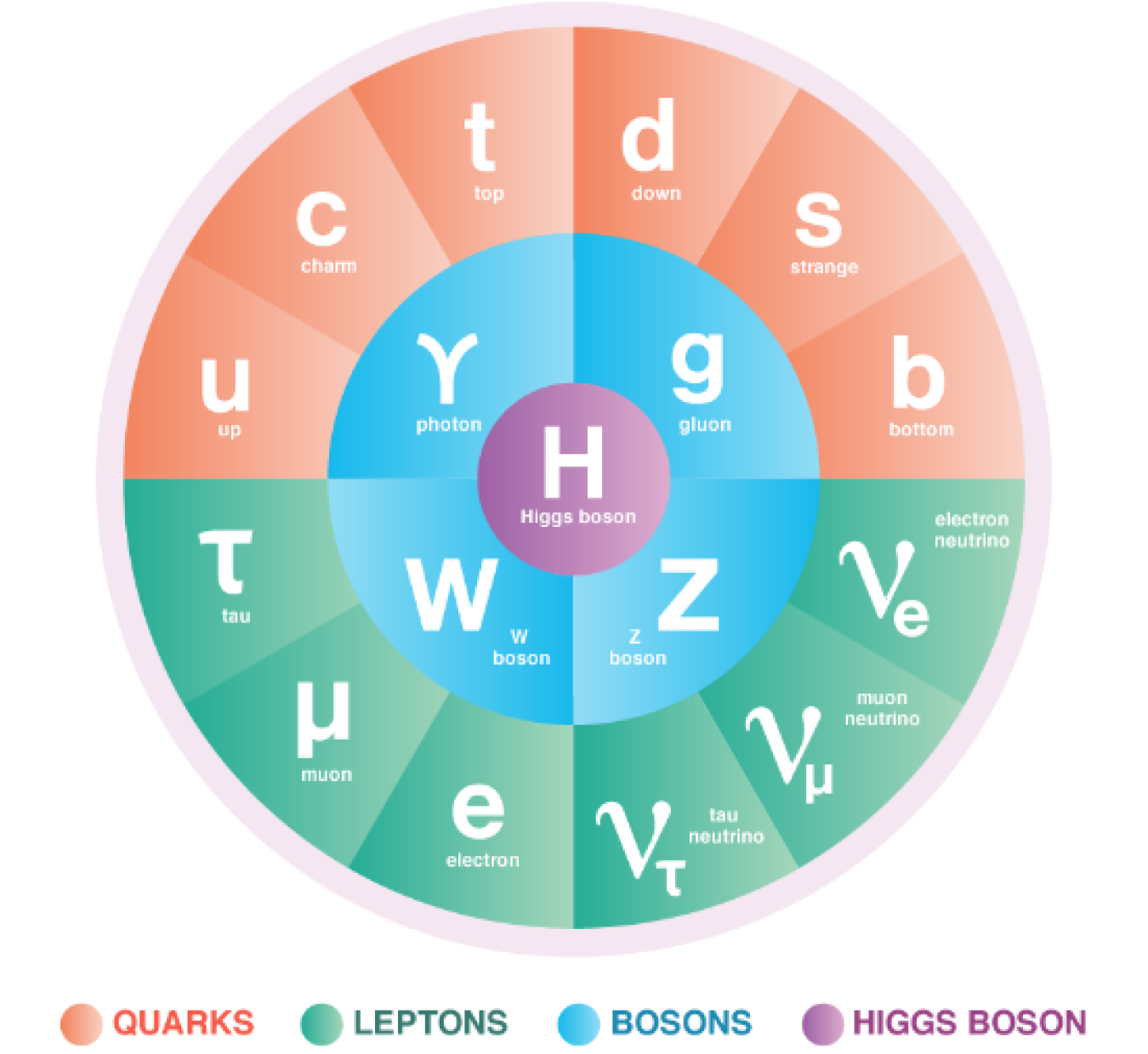
The Standard Model of Particle Physics is scientists’ current best theory to describe the most basic building blocks of the universe. It explains how particles called quarks (which make up protons and neutrons) and leptons (which include electrons) make up all known matter. It also explains how force carrying particles, which belong to a broader group of bosons, influence the quarks and leptons.
The Standard Model explains three of the four fundamental forces that govern the universe: electromagnetism, the strong force, and the weak force. Electromagnetism is carried by photons and involves the interaction of electric fields and magnetic fields. The strong force, which is carried by gluons, binds together atomic nuclei to make them stable. The weak force, carried by W and Z bosons, causes nuclear reactions that have powered our Sun and other stars for billions of years. The fourth fundamental force is gravity, which is not adequately explained by the Standard Model.
Despite its success at explaining the universe, the Standard Model does have limits. For example, the Higgs boson gives mass to quarks, charged leptons (like electrons), and the W and Z bosons. However, we do not yet know whether the Higgs boson also gives mass to neutrinos – ghostly particles that interact very rarely with other matter in the universe. Also, physicists understand that about 95 percent of the universe is not made of ordinary matter as we know it. Instead, much of the universe consists of dark matter and dark energy that do not fit into the Standard Model.
DOE Office of Science: Contributions to the Standard Model of Particle Physics
DOE has a long history of supporting research into fundamental particles. Five of the six types of quarks, one type of lepton, and all three neutrinos were discovered at what are now DOE national laboratories. Researchers supported by the DOE Office of Science, often in collaboration with scientists from around the world, have contributed to Nobel Prize-winning discoveries and measurements that refined the Standard Model. These efforts continue today, with experiments that make precision tests of the Standard Model and further improve measurements of particle properties and their interactions. Theorists work with experimental scientists to develop new avenues to explore the Standard Model. This research may also provide insight into what sorts of unknown particles and forces might explain dark matter and dark energy as well as explain what happened to antimatter after the big bang.
Standard Model of Particle Physics Facts
- All ordinary matter, including every atom on the periodic table of elements, consists of only three types of matter particles: up and down quarks, which make up the protons and neutrons in the nucleus, and electrons that surround the nucleus.
- The complete Standard Model took a long time to build. Physicist J.J. Thomson discovered the electron in 1897, and scientists at the Large Hadron Collider found the final piece of the puzzle, the Higgs boson, in 2012.
Resources and Related Terms
- Office of High Energy Physics
- Office of Nuclear Physics
- Symmetry Magazine
- The Big Questions: Sally Dawson on the Higgs Boson
- U.S. Particle Physics
- Science Highlight: Near-Threshold Resonance Helps Explain a Controversial Measurement of Exotic Decay in Beryllium-11
Acknowledgements
Contributors: Hitoshi Murayama (UC Berkeley and LBNL) and Kurt Riesselmann (Fermilab)
Scientific terms can be confusing. DOE Explains offers straightforward explanations of key words and concepts in fundamental science. It also describes how these concepts apply to the work that the Department of Energy’s Office of Science conducts as it helps the United States excel in research across the scientific spectrum.

